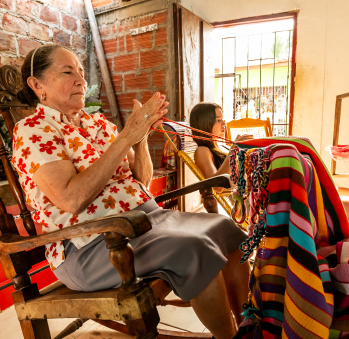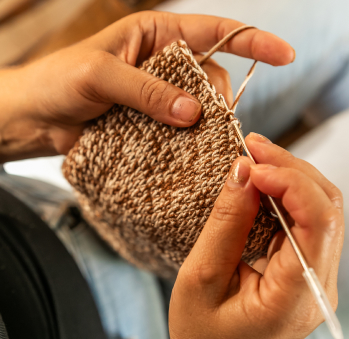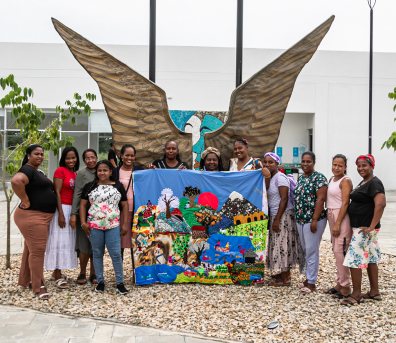María Elena Ortega
Workshop: Cooperativa reforestadoras
Craft: Weaving
Trail: Bolívar Route
Location: San Jacinto, Bolívar
María Elena clearly remembers the night her father told her that if she wanted to learn how to finish the hammocks the next day, she would have to get up before the sun rose so he could show her how to do it. This final step in making a hammock was called empitar, the process of creating the ends. Although traditionally reserved for men due to the strength it requires, her father had to leave early to work the fields and knew he could pass on the craft to her. With this, María Elena was now able to handle every part of the process from start to finish.
Despite the aches and pains, the arthritis in her hands, and the worn-out discs in her spine, María Elena has found a way to keep practicing her craft, one that demands long hours of standing. She says she’ll die weaving—that there’s no reason for anyone to ask her to stop her art. She cherishes and defends it fiercely because it’s how she makes her living, and it’s the path she prepared for in life. Weaving hammocks has been her only job, the livelihood that allowed her to raise her five children on her own. Her life has always revolved around craftsmanship, and in the nearly 48 years she’s dedicated to it, she’s witnessed how the town went from having only three hammock designs to offering a wide range of woven patterns. She remembers the seven looms in her childhood home, her sisters weaving alongside her, and her mother, Marta Teherán, teaching her how to make her first attempts at 12 years old, when she was so small she had to stand on a little stool to reach the loom. From that moment on, she fell in love with the craft, and though she didn’t know why, she developed an immense passion for it.
She also remembers the day she returned home with a load of hammocks she hadn’t been able to sell to the middlemen and met a friend who encouraged her to sign up at the Artesanías de Colombia sales point in San Jacinto. That changed her life. She learned what it was like to have weaving orders placed, to have guaranteed work, and never again have to carry hammocks on her shoulder, unsure of who would buy them or for how much. When she has an important order, you can only find her in her workshop. She wakes up, drinks a cup of coffee, and gets to weaving, forgetting everything else. She forgets about any other household chores. And six days later— the time it takes to finish one hammock—she’s done. When she immerses herself in her work, she connects with her creative drive. As soon as she sits at the loom, the design for the hammock comes to her, and she weaves until it’s finished. She draws inspiration from the everyday sights around her, like the fabric of a passerby’s shirt, and when she’s done, she surprises herself with what she’s created. She wonders, “”Wow, how did I do that?””
Craft

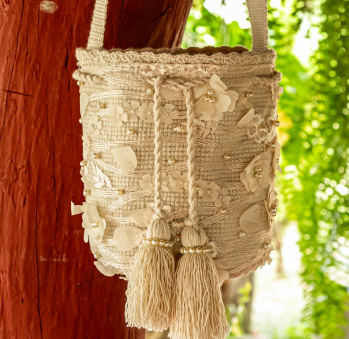






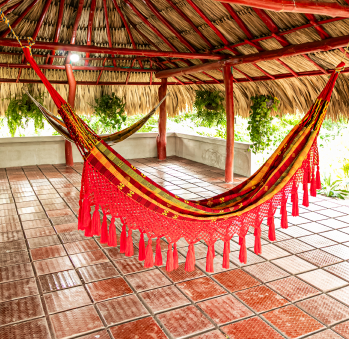









Artisans along the way
Artisans along the way
No puede copiar contenido de esta página














































